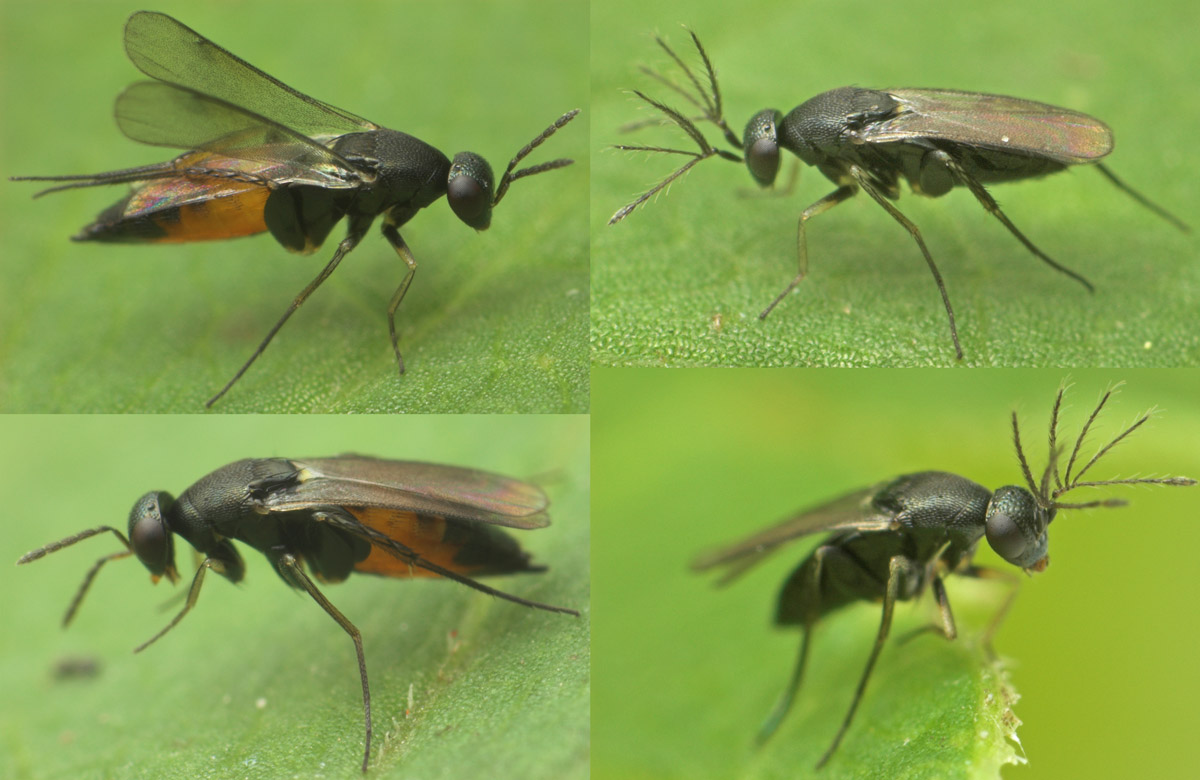Diptera.info :: Identification queries :: Other insects, spiders, etc.
Who is here? 1 guest(s)
|
Small wasp (Elasmus)
|
|
| Dmitry Gavryushin |
Posted on 21-07-2009 20:16
|
|
Member Location: Moscow region, Russia Posts: 3308 Joined: 17.10.05 |
July 21, 2009, Naro-Fominsk, Moscow region, Russia. Roughly equal proportion of males and females (total number about 20) was found in a container with (mostly) lepidopteran pupae including a couple of Psychidae cases and some cocoons of Hypera collected on Galeopsis speciosa (weevils mostly already emerged). Size: male ca. 1.5 mm, female ca. 2 mm. Hosts of Necremnus include both Psychidae and Hypera, yet to me it looks more like Pnigalio. Subject changed from Eulophinae, Necremnus/Pnigalio? to Elasmus, ID by proctoss. Dmitry Gavryushin attached the following image:  [165.13Kb] Edited by Dmitry Gavryushin on 02-08-2009 18:32 While others can't climb, using infinite pains, I, gravity turning to jest, Ascend, with all ease, perpendicular planes, Rough or smooth, just as pleases me best. |
|
|
|
| ChrisR |
Posted on 26-07-2009 10:49
|
|
Administrator Location: Reading, England Posts: 7699 Joined: 12.07.04 |
I can't comment on the identifications but those are wonderful photos Dima! 
Manager of the UK Species Inventory in the Angela Marmont Centre for UK Biodiversity at the Natural History Museum, London. |
| jorgemotalmeida |
Posted on 27-07-2009 09:56
|
|
Member Location: Viseu - PORTUGAL Posts: 9295 Joined: 05.06.06 |
wow. great wasps!  |
| proctoss |
Posted on 01-08-2009 00:31
|
|
Member Location: Moscow, Russia Posts: 191 Joined: 13.08.06 |
Elasmidae |
| Dmitry Gavryushin |
Posted on 02-08-2009 18:30
|
|
Member Location: Moscow region, Russia Posts: 3308 Joined: 17.10.05 |
Many thanks Victor, yes with branched antennae of male it seems to be Elasmus; typical big and flattened hind coxae are also quite visible, although some early authors (e.g. Nees and Foerster) took them for part of the thorax.
Edited by Dmitry Gavryushin on 02-08-2009 18:57 |
|
|
|
| Dmitry Gavryushin |
Posted on 02-08-2009 19:01
|
|
Member Location: Moscow region, Russia Posts: 3308 Joined: 17.10.05 |
I've checked Graham, 1995 (The Entomologist's Monthly Magazine, Vol.131, 1-23) and think this might be E. flabellatus (Fonscolombe, 1832). |
|
|
|
| Jump to Forum: |
















